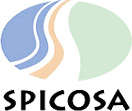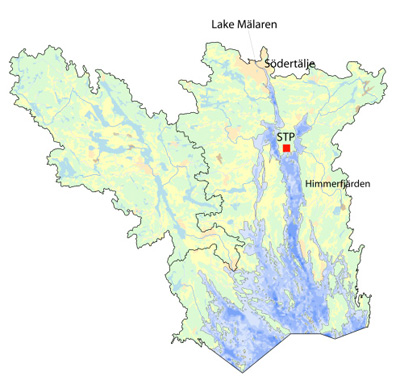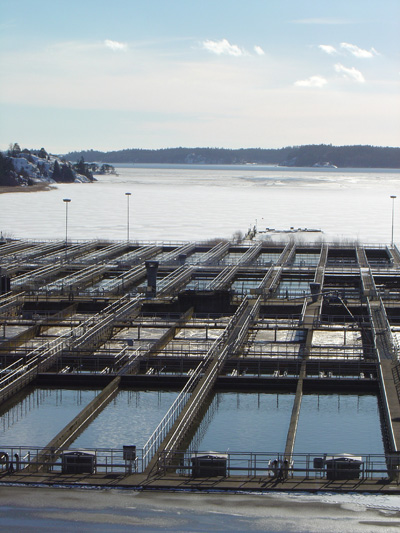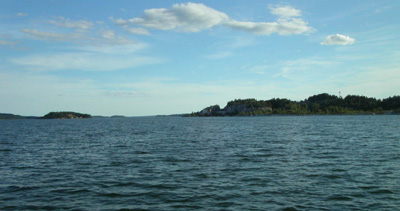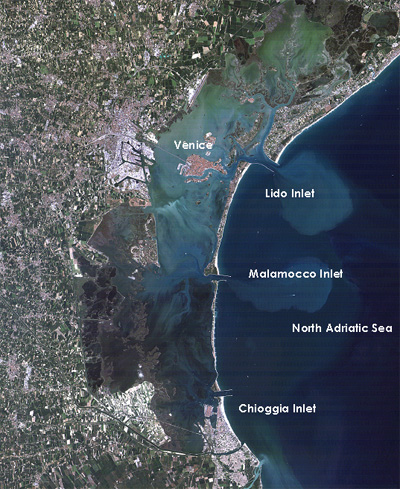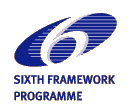 |
|
Table of Contents
|
|
|||||||||||||||||||||||||||||||||||||||
|
Plymouth hosts Coastal Zone System Design workshop In mid September sixty three SPICOSA researchers from Node 2 and the 18 Study Site Applications (SSAs) converged on Plymouth in the UK to take part in a workshop. The purpose of this workshop, led by Paul Tett, was to present the first volume the System Design Step of the Systems Approach Framework (SAF) Protocol. The meeting was designed to provide an opportunity for the those researchers, who are responsible for applying the SAF in their SSAs, to discuss with the writers of the chapter, and amongst themselves, the content of Design Step. The format of the workshop functioned well with each presentation by a WP3 member being followed by an example from one of the SSAs describing how the content of the previous talk might be applied. The group exercises that followed these presentations also gave the delegates good practice for how they will design the SAF application for their particular Study Site. Instead of the traditional conference meal, all of the delegates were sent afloat to see Plymouth from the sea and the Tamar Estuary, armed with a buffet and a well-stocked bar. The unseasonably warm and dry weather made the experience even more enjoyable and the boat was alive with discussions between friends and colleagues, although not all could be heard due to competition from the skipper, who dauntlessly pointed out all the points of interest to perhaps a more conventional tourist. Fortunately, the cruise spent most of its time on the calm estuarine waters that failed to stimulate any reports of mal de mer! The workshop delegates left Plymouth with the tools and enthusiasm to start designing the SAF for their SSAs and to prepare their first results due within the coming months. For more information contact Christopher
Lowe, University of Plymouth, e-mail: <christopher.lowe@plymouth.ac.uk> |
|
|
Mar Piccolo Study Site conducted first stakeholder meetings On 4th and 17th October 2007, at the IAMC-Taranto, the first two meetings with the local stakeholders of the Mar Piccolo Study Site were organised. In a historical library, deputies of the Municipality and the Province of Taranto, the Apulian Regional Agency for the Environment, the local universities, the Harbour Office, the Harbour Authority, the Health Office, as well as delegates of both local mussel farmers and industries came together. The first meeting was centred on the explanation of both the aims and the methods of the SPICOSA Project. Two main speakers were involved: Prof. Tom Hopkins, Scientific Coordinator of SPICOSA, who introduced the Project and showed an example of the EXTEND application and Dr. Carmela Caroppo the Study Site leader for the Mar Piccolo of Taranto, who explained the background and the aims of the Project itself. All those present voiced a general appreciation of the Project and showed their interest in joining the SPICOSA team of Taranto. At the same time, they asked for further and deeper explanation of the Project, in order to well understand both all its possible applications and their own role in its development.
Project presentation at local stakeholder session For this reason, a second meeting was arranged on 17th October, during which, apart from a deepening of the ecological implications of SPICOSA, also the socio-political and the economic aspects were explained and the main “issue” was identified: the improvement of both the production and the quality of the mussels in the Mar Piccolo. All the participants agreed upon the importance of the selected “issue” for the whole Taranto community. After a long and well moderated discussion, they showed their willingness for sharing all the useful data which they own and declared their pledge for the identification and the realization of all the possible ameliorative policies able to improve the production and the quality of the Mar Piccolo mussels.
Local stakeholders at discussion session The organization of both meetings required a noticeable effort by all the involved staff. But, it was compensated by the high participation and the apparent interest of the most important authorities and institutions. Indeed, in a town such as Taranto, suffering for a strong economic and recent institutional crisis, this result exceeded all expectations. Now, we hope that the declared interest will be converted into actions! Antonella Petrocelli, Mar Piccolo of Taranto SSA Team, e-mail: <antonella.petrocelli@iamc.cnr.it> |
 |
|
Second EXTEND training workshop A second extend training workshop will take place on 14th and 15th of November 2007 in Brussels. There will be 36 participants. The course is designed for beginners and will provide the same content as the course given earlier this year at VITO, Mol. The ULB is hosting the training workshop. Details can be requested to Mateo Cordier at Mateo.Cordier@ulb.ac. Furthermore, this training workshop will be
followed on 16th November 2007, by a dedicated meeting of the
SPICOSA Work Package Model Support (8) leader VITO, with the
aim to assess and review the status of the work done so far
and to reflect on generic and specific EXTEND model building
blocks, the SPICOSA model library and the model and data portal.
The set of tutorials and results will be made available soon,
as well as examples. |
|
|
ENCORA facilitates sharing expertise with other projects During the past months, many Work Tasks and Study Sites of SPICOSA have defined research plans and started their work. However, before doing so several Work Task and Study Site leaders have first asked the question: can we benefit from cooperation and from sharing experience with other projects or research groups in Europe? This has a triple advantage: duplication of work done elsewhere is avoided, certain efforts can be shared, and the SPICOSA approach is propagated to a broader European research community. The Coordination Action ENCORA, a sister project of SPICOSA, co-funded by FP6, organises several network services for facilitating the sharing of knowledge and experience among European coastal professionals. Several SPICOSA Work Tasks and Study Sites have called on these services to explore opportunities for cooperation with other research groups in Europe. Five requests where submitted during the last month. These were sent to the members of the ENCORA coastal networks of 13 EU countries (Belgium, Denmark, France, Germany, Greece, Italy, Ireland, Netherlands, Poland, Portugal, Spain, Sweden, UK) and 5 non-EU countries (Russia, Ukraine, Morocco, Tunisia and Algeria). Mid-October eleven expressions of interest for cooperation with SPICOSA were received. SPICOSA Study Site leader Leyla Tolun uses the Systems Approach Framework for dealing with industrial pollution in Izmit Bay, Turkey. Professor Mauro Fabiano from Genoa University is interested to cooperate on the application of the SAF; Gerd Liebezeit from Research Centre Terramare in Germany is interested to work together on techniques for monitoring organic pollutants; Semlali Abdelghani from INRH (Morocco) is interested to share information on biomonitoring in mussels and Archetti Renata from Bologna University offers to share experience on the use of videocamera techniques. SPICOSA Work Package leader Nicolas Dittert offers to archive data and information in the World Data Centre for Marine Environment. There is interest from the Shirshov Institute Russia (datasets of Mediterranean, Black Sea and North Sea), from IBW-PAN Poland (datasets of the Baltic coast at Lubiatowo) and from INRH Morocco (datasets of the Mediterranean and the Black Sea). SPICOSA Work Task leaders Mateo Cordier and Walter Hecq ask for sharing experience in economic assessment studies. Silva Marzetti from University of Bologna and Lorenzo Venzi both offer to share experience in economic assessment of beach erosion problems.
Screenshot ENCORA – Search Mechanism SPICOSA Work Package leader Joachim Maes looks for partners to share experience on the development of broadly applicable model building blocks for decision support systems. Heike Holzfuss form the German Federal Ministry for Environmental Protection recommends contacting the NOKIS project coordinator Rainer Lehfeldt. SPICOSA Study Site leader Tomaz Boski asks advice on geographic social and economic indicators for the Guadiana estuary, Portugal. Help is offered by Mohamed Amrani, economist at INRH, who works on similar issues in the Khnifiss lagoon on the South Atlantic coast of Morocco. Some of the replies to the SPICOSA contact search indicate that potential partners hesitate to reply because they don’t get a sufficiently clear picture of the type of the subject, the research interest of the applicant and the of cooperation that is requested. Another experience of search requests is that it may take some time to reach the right people. So more replies may still trickle in … For more information visit www.encora.org
|
|
|
List of upcoming events CPMR Seminar: Ports and maritime transport:
the Regions in support of an ambitious and balanced EU policy
3rd European Conference on Lagoon Research
& 1st Congress Lagunet (Italian Network for Lagoon Research) ECO-IMAGINE Final Conference "Future
Perspectives of GI for ICM" ENCORA conference on EUROPEAN ACTION
PLANS The Littoral Challenge Dialogue Action
International Symposium on "Coping
with global change in marine social-ecological systems" |
|
|
The Project will test and improve its methodology, the System Approach Framework (SAF) at various sites in a limited, real-time configuration. We have chosen eighteen Study Site Applications (SSAs) all over Europe for this purpose. In each issue of this SPICOSA Newsletter, we will introduce some study sites.
Himmerfjärden and its adjacent bays and islands are situated 60 km south of the Swedish capital of Stockholm, on the Swedish coast of the brackish Baltic Sea. This system forms the sea route to the industrial town of Södertälje, location of the Scania heavy lorry factory, and of a major AstraZeneca pharmaceutical plant. Locks in Södertälje provide access to major towns on Lake Mälaren, such as Västerås, home to a major ABB plant, and the university town of Örebro. A millenium ago, Lake Mälaren was still
an arm of the sea, and Viking ships sailed down Himmerfjärden
on route to ravage Europe. Today, the coast has become a popular
tourist destination and is spotted with recreational houses,
while several of the islands are nature reserves, and part of
the coastal waters is marine protected area. The commercial
fisheries of herring, eel and pike-perch are in decline, but
recreational fishing has become more important.
The Himmerfjärden coastal system with its drainage area (green: forest, yellow: farmland and fields, brown:wetlands, blue:lakes and streams, orange: populated areas). Distance from north to south is 45 kilometers. The bay system has a water area of 232 km² 2, a mean depth of 17 m and a salinity of 4-7 ‰, only slightly lower than the Baltic. Freshwater is received from nine brooks and diffuse runoff (10m³ /s), from Mälaren through locks at Södertälje (7m³/s), and the Himmerfjärden Sewage Treatment Plant (1.5m³/s, red square). There is no perceptible tide, and water temperature varies from over 20 °C in a warm summer to below freezing in most winters, with up to three months of ice cover. The drainage area of 1286 km2 is 65% forest, 20% agricultural land, 8% lakes and 3% built area. Himmerfjärden receives treated sewage not only of local origin but also from Stockholm, with the Himmerfjärden sewage treatment plant treating effluents from 250 000 persons, as well as industrial waste. Nutrient loading has caused increased turbidity, loss of biodiversity, including submerged aquatic vegetation and deep water oxygen deficiency. In earlier times, even heavy metals, e.g. mercury, were discharged by industry, but this has now almost ceased. Historical overfishing in the Baltic has caused trophic web changes and contributed to the reduction of the commercial fishery.
View from the Himmerfjärden sewage treatment plant to the south. SPICOSA can profit from the fact that the Himmerfjärden area has been studied ecologically since 1976, with focus on its eutrophication status. During this period the amount of treated sewage discharged has increased considerably. Efficient nitrogen-reduction (~90%) in the sewage treatment plant from 1997 improved water quality and promoted an increase in nitrogen-fixing non-toxic filamentous cyanobacteria. Experiments with temporarily increased nitrogen discharges aim at defining the maximum nitrogen reduction compatible with a low activity of nitrogen-fixing cyanobacteria.
View from the inner Himmerfjärden basin
to the south, with the island Oaxen to the right. Ulf Larsson , Himmerfjärden Coastal System (Sweden) SSA Team, e-mail: <ulf.larsson@ecology.su.se> |
|
|
Venice Lagoon has a surface area of about 550 km². It is not only the largest lagoon, but has the widest tidal range of the Mediterranean Sea. Three inlets, Lido, Malamocco, and Chioggia, connect it to the Northern Adriatic Sea. The lagoon has three main basins: the northern basin, North of the city of Venice, where the deposits of the Piave and Sile rivers prevail, the southern basin, South of the Malamocco inlet, characterized by the sedimentation from the Brenta and Bacchiglione rivers, and the central basin, between the city of Venice and the Malamocco inlet, with prevalent Brenta river sediments reworked by hydrodynamics.
Map of Venice Lagoon The Venice Lagoon System has a variety of habitats, including dunes, tidal channels, bare mudflats, seagrass beds, and salt marshes. It is a Ramsar site and has important ecological functions like all others wetlands. During the winter season, more than 100.000 migrating waterfowl rest in the lagoon area, seven species live here all year round. Two main cities, Venezia and Chioggia, and a number of towns and villages with a total population of 400,000 are located around the lagoon and on some islands. About 20 million tourists visit the historical city of Venice each year while the resident population is only 60,000. Venice has one of the most important ports in Italy. 30 million tonnes of goods are shipped per year and the number of cruise ship passengers is 1 million. Venice also has the third busiest Italian airport and Italy’s petrochemical and chemical industry (Marghera) has its roots here. The Lagoon of Venice has changed its morphological features over the centuries and this as led to a tendency to lose its original characters to turn into a bay. Maintaining the ”lagoon status”, balancing sediment inputs and erosion, and defending the area from sea storms, implies wide human interventions, which in Venice has been a continuing process since the XIVth century. Industrial and port activities, other human pressures and intensive agriculture in the drainage basin all increased during the last century and led to eutrophication and pollution of water and sediment. Venice and its lagoon was declared “of national interest” by an Italian law in 1973 and a “World Heritage Site” by UNESCO in 1987. Huge economic resources have been spent by the Italian State on safeguarding the lagoon, the cultural heritage and on re-vitalizing the city. The cost–benefit ratio of these interventions is still an issue. Various actions undertaken to enhance the industrial development of the city, together with natural phenomena, sea level rise and subsidence have led to a pronounced process of sinking of the city, about 23 cm in the last century, and an increased frequency of high waters. After a 30 year long debate, the political decision has finally been taken to construct a mobile barrier system between the lagoon and the sea. The system includes mobile flood barriers at the lagoon inlets in order to isolate the lagoon from the sea in the case of high tides and raised lagoon banks and pavements in areas that lie lowest. Venice Lagoon System, as one of the 18 Study Sites of SPICOSA, will apply SPICOSA methodology on the policy issue regarding shellfish fishery management. Fishing of clams is an important economic activity, accounting for 60% of national production, but its actual sustainability is uncertain: over-fishing, ‘fishing down the food-web’, sediment resuspension, damage to benthos and habitat destruction are recurrent problems. Not only in Venice, but in many other similar areas around the world hostility to the expansion of shellfish farming by other users of coastal waters has increased, especially in developed countries. Objections have generally centred on loss of amenities and recreational areas, and degradation of the environment. Adverse effects of shellfish farming activities may include: i) organic enrichment of the sediment around shellfish farms, ii) reduction in food supplies for other filter feeding organisms and iii) habitat disturbance and degradation. The last issue is certainly the main reason for concern with regard to the Lagoon of Venice, where, according to several studies the poor control exerted over the production of Tapes philippinarum (Manila Clam) is severely damaging the benthic community and significantly increasing the erosion rate in many lagoon areas. Today about 1.350 people are employed by the fishing sector of Venice Lagoon which include activities such as fishing with fyke nets, “vallicoltura” (a traditional form of aquaculture in lagoon type environments), catching fish fry for rearing other fish, clam fishing (Tapes philippinarum), and mussel culture. Recently, authorities in Venice have issued a plan to manage the fishing sector of the Lagoon, in order to monitor the increasing fishing effort and control damaging and unsustainable techniques such as suction dredgers and rakes for harvesting clams. Industrial activities close by, such as the oil refineries located at Marghera port, have contributed to causing significant environmental damage to the marine ecosystem, including the damage of nursery areas and feeding grounds of many commercial fishes. The top layers of sediments of Venice Lagoon are contaminated, also by the pollution load from inflowing rivers and the urban areas of Mestre and Venice. Inside Porto Marghera industrial area levels of contaminants are comparable to those found in areas with high levels of human impact. This contamination damages organisms living in contact with the sediment and causes bioaccumulation and biomagnification of pollutants. Fishing of the benthic bivalve Tapes philippinarum in Venice Lagoon, for example, therefore represents a real hazard to consumers. Simona Dalla Riva, Venice Lagoon System (Italy) SSA Team, e-mail: <dallariva@corila.it> |
 |
| COLOPHON SPICOSA NEWS is a newsletter produced by the SPICOSA consortium for professionals dealing in one way or another with coastal science, planning, and management. It is to be published every four months. The next issue is due in January 2008. This electronic newsletter may be forwarded freely to others working in the ICZM field. If you would like to receive the SPICOSA Newsletter directly, please subscribe. If you no longer would like to receive the SPICOSA Newsletter, please unsubscribe. News-items for publication can be send to
|
An integrated project under the
|
